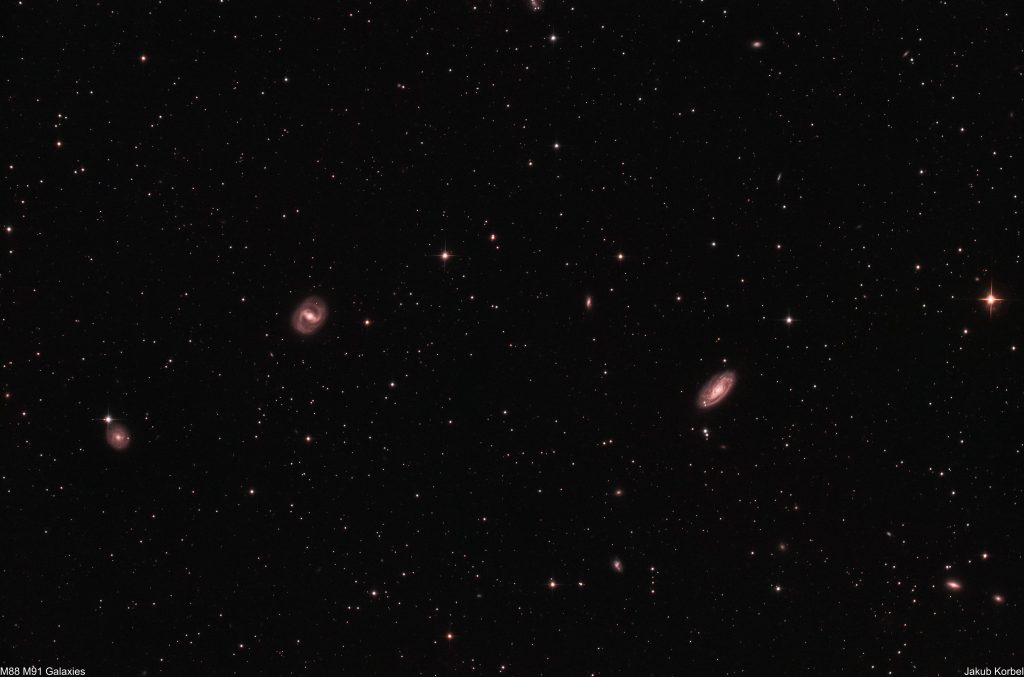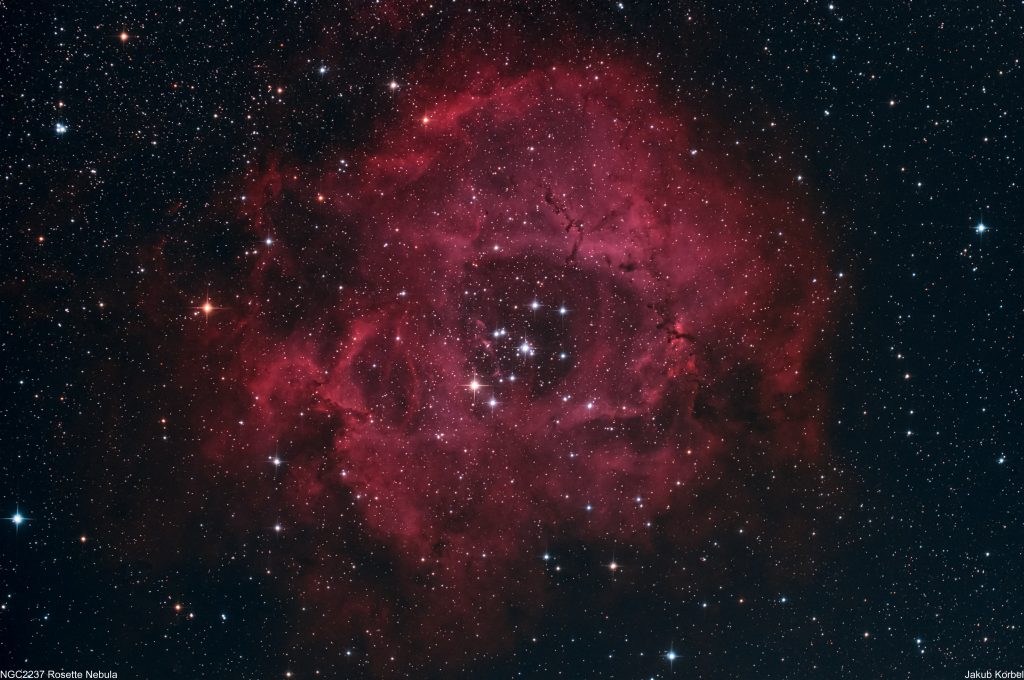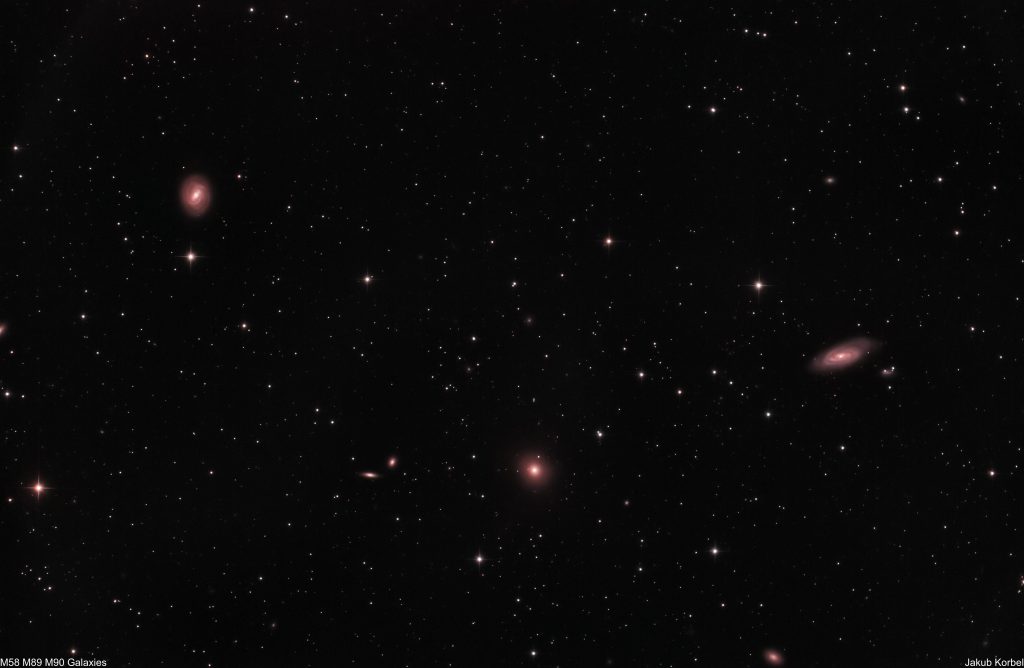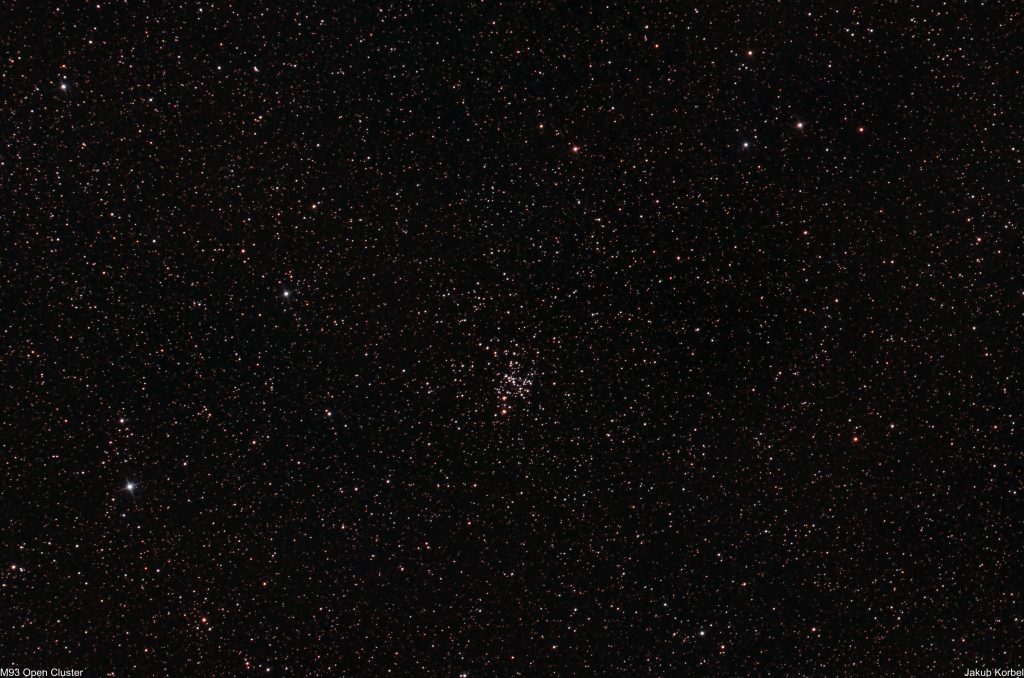Messier 88 (right) and Messier 91 are the spiral galaxies located between constellations Coma Berenices and Virgo. Both belong to the Virgo Cluster of galaxies and both are approximately 60 light-years away from Earth. The small galaxy at the very left is called NGC 4571.

Technical data:
| Telescope | Newton 150/600 mm |
| Aperture | 150 mm |
| Focal length | 630 mm |
| Mount | Avalon M-Zero |
| Autoguiding | ZWO 174MM, Guidescope 30 mm |
| Camera | ZWO 071 Pro @-15°C |
| Corrector | Explore Scientific HR |
| Filters | Astronomik L-1 - UV IR Block Filter |
| Exposure | 47x300s, Gain 94, bin 1x1, |
| Date | 2019-03-30 |



